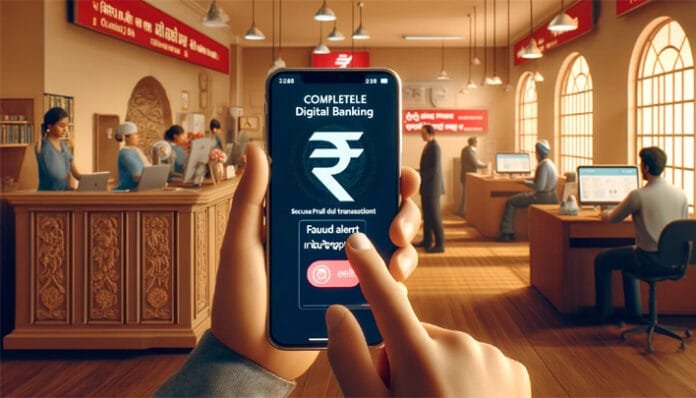The Unified Payments Interface (UPI) has revolutionized digital transactions in India, making payments seamless and efficient. However, the rise in digital fraud cases has prompted the National Payments Corporation of India (NPCI) to take strict measures. The NPCI is currently in discussions with banks to remove pull transactions on UPI, a move that could significantly curb fraudulent activities.
What Are Pull Transactions in UPI?
In UPI transactions, payments occur through two primary methods: push transactions and pull transactions.
- Push Transactions: These are transactions initiated by customers, such as payments made by scanning a QR code, entering a UPI ID, or selecting a contact from their banking app.
- Pull Transactions: These occur when a merchant or service provider requests payment from a customer, who must then approve it. Pull transactions are commonly used in bill payments, subscription services, and other automated payment requests.
Most digital fraud cases involving UPI are linked to pull transactions, as fraudsters can send unauthorized payment requests, tricking users into approving them.
Why Is NPCI Considering the Removal of Pull Transactions?
The primary reason for removing pull transactions from UPI is to reduce fraud cases that exploit this feature. Fraudsters often send fake payment requests disguised as legitimate transactions, deceiving users into authorizing payments.
Key Reasons Behind This Move:
- High Incidence of Fraud – Pull transactions have been frequently exploited by scammers, leading to significant financial losses.
- User Security Concerns – Many customers unknowingly approve fraudulent requests, putting their finances at risk.
- Enhancing Customer Trust – By eliminating pull transactions, UPI can further strengthen its reputation as a secure digital payment system.
- Preventing Unauthorized Debits – Fraudulent apps and links often exploit pull requests to siphon off money without user consent.
How Will This Affect Users and Merchants?
While removing pull transactions can reduce fraud, it could also impact some legitimate transactions. Banks and businesses that rely on pull transactions for recurring payments, bill collections, and subscription-based services might face disruptions.
Potential Impacts:
- For Customers:
- Increased security with fewer scam attempts.
- A shift to manual payments or push transactions for bill payments and subscriptions.
- For Merchants:
- Subscription-based businesses may need to adopt alternative payment methods.
- Higher reliance on push transactions, which require more effort from customers.
- For Banks and Payment Service Providers:
- The need to develop new solutions for automated payments.
- Potential delays in payment processing for businesses.
Current Status of NPCI’s Decision
Discussions with banks are in the initial stages, and no final decision has been made. The Reserve Bank of India (RBI) and NPCI are evaluating how the removal of pull transactions will impact the UPI ecosystem. They are also considering alternative solutions to maintain security without disrupting essential services.
RBI Data on Digital Payment Fraud
According to RBI data, digital payment fraud remains a pressing issue. The RBI Ombudsman received a total of 14,401 complaints related to digital payments between April and June 2024, which increased to 12,744 complaints in the following quarter (July–September).
UPI transactions have witnessed massive growth, surpassing 16 billion transactions in February 2024, with a total transaction value exceeding ₹21 lakh crore. The year-on-year growth of UPI transactions was 46% in 2024, highlighting its dominance in the digital payments space.
Possible Alternatives to Pull Transactions
If pull transactions are removed, alternative methods will be required to ensure smooth transactions for businesses and customers. Some potential solutions include:
- Mandated Two-Factor Authentication – Implementing stricter authentication methods for pull transactions.
- Tokenization of Transactions – Ensuring secure, one-time token-based approvals for recurring payments.
- UPI AutoPay Enhancements – Strengthening UPI AutoPay to make it more secure for legitimate automated transactions.
- Push Notifications and Alerts – Enhancing real-time fraud detection alerts to prevent unauthorized payments.
What Should Users Do to Stay Safe?
While NPCI and banks work towards implementing changes, users must remain vigilant against fraudulent transactions. Here are some safety tips:
- Never approve payment requests from unknown sources.
- Verify merchant details before authorizing a pull transaction.
- Enable transaction alerts for immediate notifications on debits.
- Use strong UPI PINs and avoid sharing them with anyone.
- Report suspicious requests immediately to the bank or UPI service provider.
Conclusion
The move to remove pull transactions from UPI could be a significant step in preventing digital fraud. While it may pose challenges for merchants and service providers, the long-term benefits in terms of security and customer trust outweigh the inconveniences. As discussions continue, NPCI and banks will need to develop secure alternatives to maintain UPI’s efficiency and convenience while protecting users from fraudulent activities.















